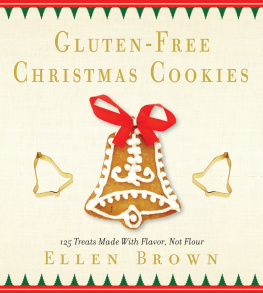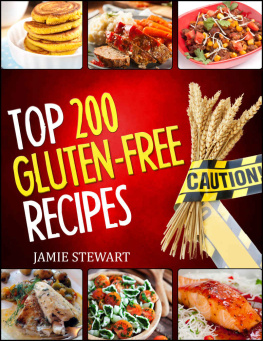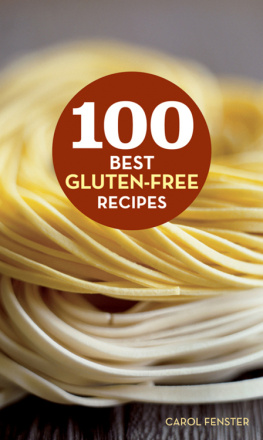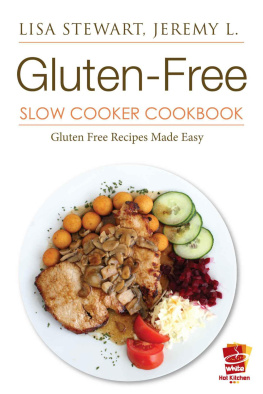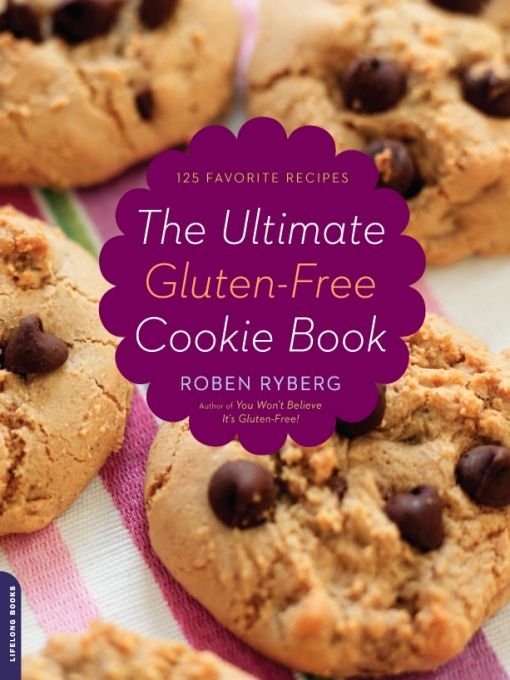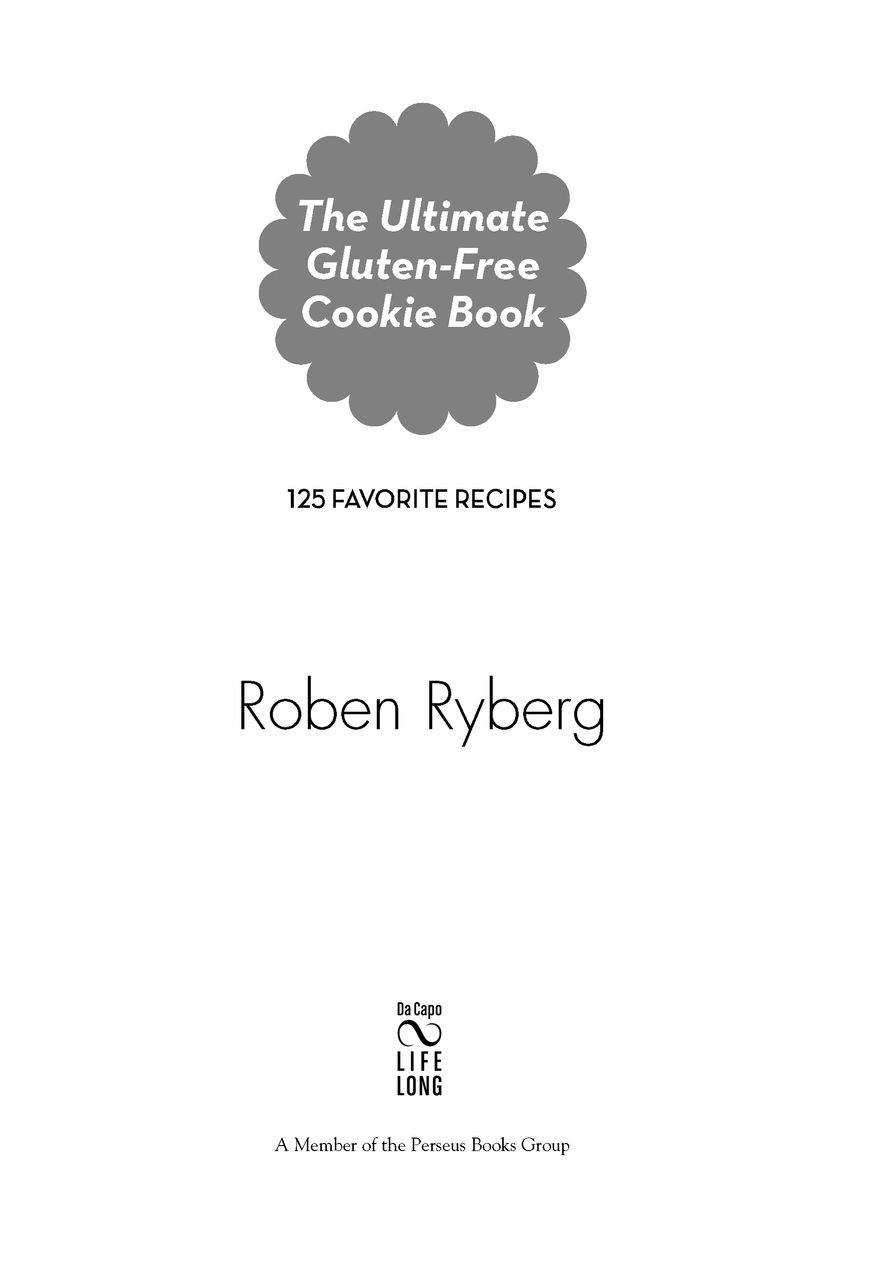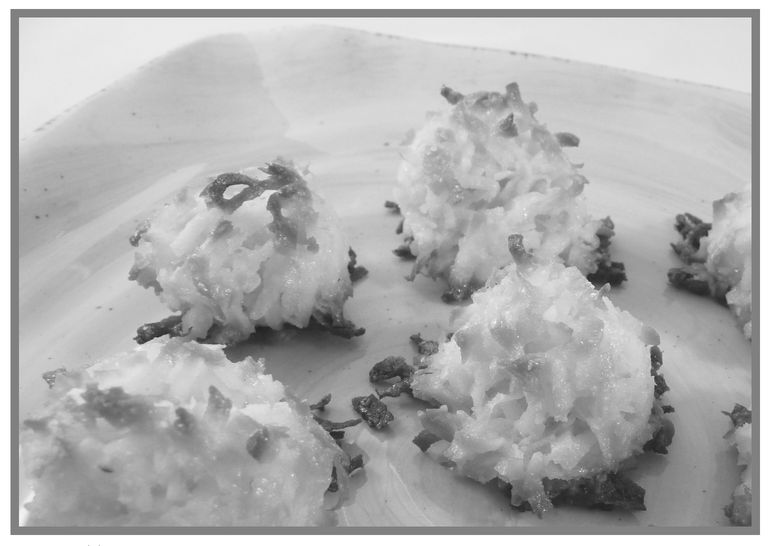Table of Contents
Also by Roben Ryberg:
You Wont Believe Its Gluten-Free!
The Gluten-Free Kitchen
Recipes by Roben Ryberg:
Eating for Autism
To happy days,
counting blessings
old and new...
Coconut Macaroons, page 26
Acknowledgments
To those that guide my research:
Thank you for your feedback on gluten-free foods; for wanting healthier, whole-grain flours; for demanding good taste; and for wanting foods that dont stale in just one day. Thank you for pushing me to do better simply.
To those that test:
Thank you to the Boonsboro High School cross-country team for eating batch after batch of cookies; to friends who took cookies to bake sales to raise awareness of gluten sensitivity; to Crawfords diner for testing and sharing my cookies with customers; to other friends and family for fearlessly testing again and again.
To those that give:
Thank you to Sara Boswell for sharing her expertise in food science; to Stacie Nitza, my fellow foodie; to Cassandra Gee for baking, editing, and playing cheerleader; to the gluten-free community, both online and in various states, for supporting my work; to the Girl Scouts of Central Maryland, Inc., for providing samples of their cookies so that I could test my great fakes side-by-side with their outstanding cookies.
Foreword
By Dr. Stephen Wangen
Roben and I first met at a national conference on gluten intolerance sponsored by GIG, the Gluten Intolerance Group of North America (www.gluten.net). Like everyone there, we shared a keen interest in everything gluten-free.
Roben has a passion for making gluten-free bread and baked goods. However, she isnt satisfied with good alternatives. She demands that they are as close to the real thing as possible. In a recent conversation where she was describing the painstaking process that she went through to develop one particular cookie, I was impressed with her persistence and her patience. She spent hours coming up with just the right mix of ingredients and techniques to perfectly replicate a traditional cookie. And that was just one of the more than one hundred cookies in this book!
We also share an interest in the significant health benefits of being gluten-free. My passion is in helping people to discover their gluten intolerance. Too many people remain undiagnosed. And many people think that gluten intolerance and celiac disease are essentially the same thing. But celiac disease only represents a fraction of those who are gluten intolerant.
Celiac disease is caused by an inability to digest gluten, a protein found in wheat, rye, (cross-contaminated) oats, and barley. This condition affects about 1 percent of the population, or around 3 million people in the United States. These people develop damage in the small intestine called villous atrophy. However, there are millions more who are suffering from gluten intolerance who do not get this type of damage in the small intestine because it only represents one possible result of a gluten intolerance. These people often get overlooked or misdiagnosed, as do many people who have celiac disease. As a medical community doctors are still only in the early stages of properly recognizing this problem.
It is worth noting that nonceliac gluten intolerance is not necessarily any less severe than that of celiac disease. And in many people it is more severe. In either case, avoiding gluten helps to resolve an incredibly large number of health problems. There are well over two hundred different conditions known to be associated with gluten intolerance, and the list grows weekly as more research is done. Many common complaints such as fatigue, headaches, arthritis, anemia, heartburn, diarrhea, constipation, gas, bloating, abdominal pain, eczema, osteoporosis, and even weight gain can be caused by a gluten intolerance. A more complete list can be found in my new book, Healthier Without Wheat: A New Understanding of Wheat Allergies, Celiac Disease, and Non-Celiac Gluten Intolerance.
Of course, going gluten-free is easier said than done. This is where the ideal of living healthier without gluten meets the practicality of trying to do just that. Its a steep learning curve, and there are bound to be frustrations. There are also the emotional attachments to food that we develop over a lifetime. And that is never truer than it is for baking cookies, which is almost a national pastime.
For these reasons, we are incredibly fortunate to have Robens book. Roben has dramatically shortened the learning curve for the rest of us, and given us hope that we can maintain some old traditions as long as were willing to learn to do them a little differently. And she has done this for just about any cookie that one can imagine, or at least that I can imagine.
Whats more, Roben has also incorporated the recent research by the Cereal Quality Lab at Texas A&M to bring us a healthier cookie. That may sound like a bit of an oxymoron, but every effort helps. Gluten-free foods are nutritionally often a shell of their wheat-based counterparts. Using brown rice flour and sorghum flour is a major improvement, and it doesnt detract from the taste of the cookie. These are still the real thing, not some health food substitute for a cookie.
I hope that you enjoy learning to bake these cookies, and I am thrilled that youll be able to be gluten-free in the process. On behalf of all of us, thank you, Roben.
Dr. Stephen Wangen
www.HealthierWithoutWheat.com
The Science of Gluten-Free Cookies
By Texas A&M University, Cereal Quality Lab, College Station, TX
Carbon, hydrogen, oxygenno, we are not in chemistry class. We are discussing the elemental ingredients in your cookies. A certain fuzzy blue monster once sang, C is for Cookie and thats good enough for me, but when it comes to baking easy gluten-free and allergy-free cookies, one has to take a closer look at the science behind the combination of ingredients that we are using.
Your typical wheat-based cookie is made from what bakers call soft flour. A soft flour means that it has a lower protein (gluten) content than a hard wheat flour that is used to make wheat breads. The gluten protein in the flour helps hold the dough and the final cookie or bread together. Thats why your cookie is soft and easy to chew but strong enough to keep from crumbling. Gluten-free baking can often be frustrating, as you no longer have the majority of that protein structure. Gluten-free flours do not have the same type of proteins that hold your other contents together, so ingredients like xanthan gum or guar gum are added to gluten-free dough to help out instead. Fortunately, due to the low gluten content in cookie recipes, cookies are easier to mimic for gluten-free recipes than more complicated products.
Gluten-free flours are made from a wide variety of grains, pseudo-grains, seeds, nuts, tubers, and pretty much anything else you can think of that can be ground into a semi-powder form to be called a flour. Some gluten-free flours are processed into what is sold as a starch, just a portion of the parent flour. These starches (sometimes referred to as flours by producers) from potato, tapioca, and corn are often criticized for being unhealthy, so this poses the questions: What is starch? And why does it make my gluten-free baked goods tasty?





